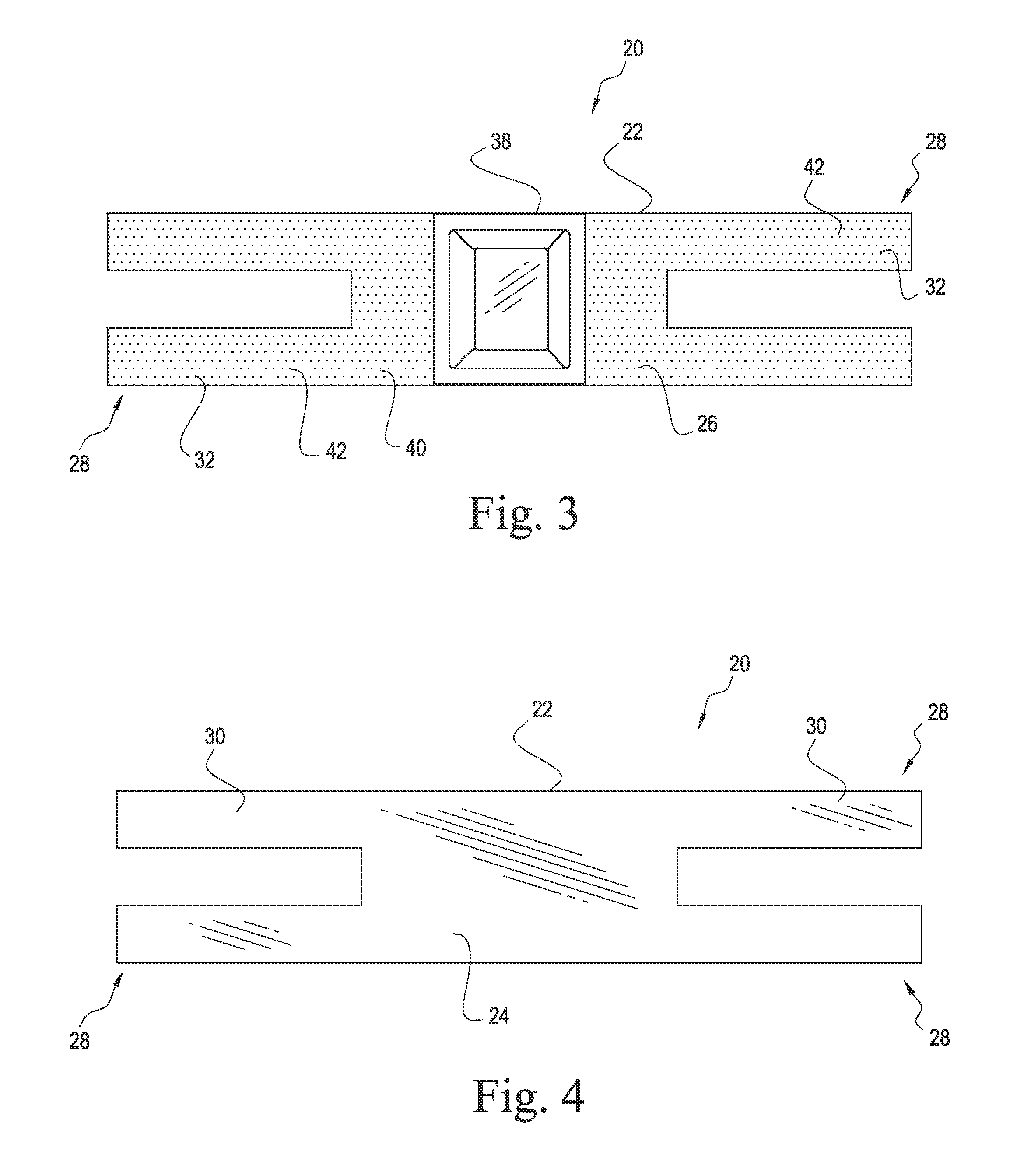Intravenous splint cover and associated methods
a splint cover and intravenous technology, applied in the field of medical devices, can solve the problems of occlusion of iv, affecting the patient's comfort, and exposing the patient to possible infection, and achieve the effects of strengthening adhesive properties, enhancing adhesive properties, and convenient security
- Summary
- Abstract
- Description
- Claims
- Application Information
AI Technical Summary
Benefits of technology
Problems solved by technology
Method used
Image
Examples
Embodiment Construction
[0026]The present invention will now be described more fully hereinafter with reference to the accompanying drawings, in which preferred embodiments of the invention are shown. This invention may, however, be embodied in many different forms and should not be construed as limited to the embodiments set forth herein. Rather, these embodiments are provided so that this disclosure will be thorough and complete, and will fully convey the scope of the invention to those skilled in the art. Like numbers refer to like elements throughout, and prime and multiple prime notations, if used, refer to similar elements in alternate embodiments.
[0027]In this detailed description of the present invention, a person skilled in the art should note that directional terms, such as “above,”“below,”“upper,”“lower,” and other like terms are used for the convenience of the reader in reference to the drawings and the accompanying descriptions. Also, a person skilled in the art should notice this description ...
PUM
 Login to View More
Login to View More Abstract
Description
Claims
Application Information
 Login to View More
Login to View More - R&D
- Intellectual Property
- Life Sciences
- Materials
- Tech Scout
- Unparalleled Data Quality
- Higher Quality Content
- 60% Fewer Hallucinations
Browse by: Latest US Patents, China's latest patents, Technical Efficacy Thesaurus, Application Domain, Technology Topic, Popular Technical Reports.
© 2025 PatSnap. All rights reserved.Legal|Privacy policy|Modern Slavery Act Transparency Statement|Sitemap|About US| Contact US: help@patsnap.com



